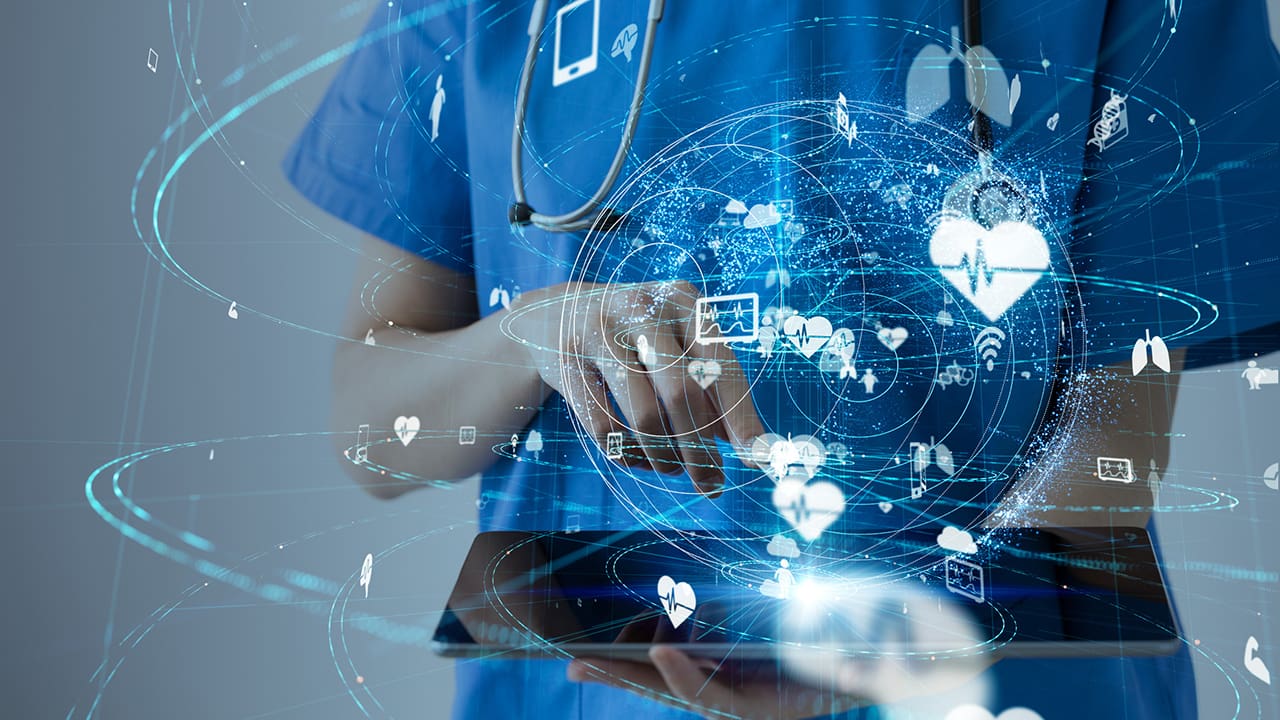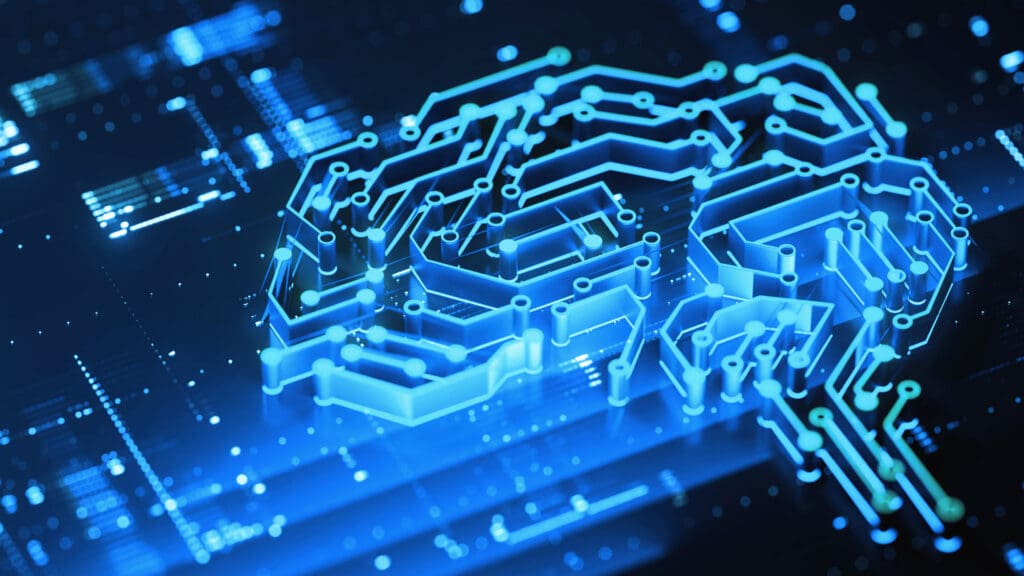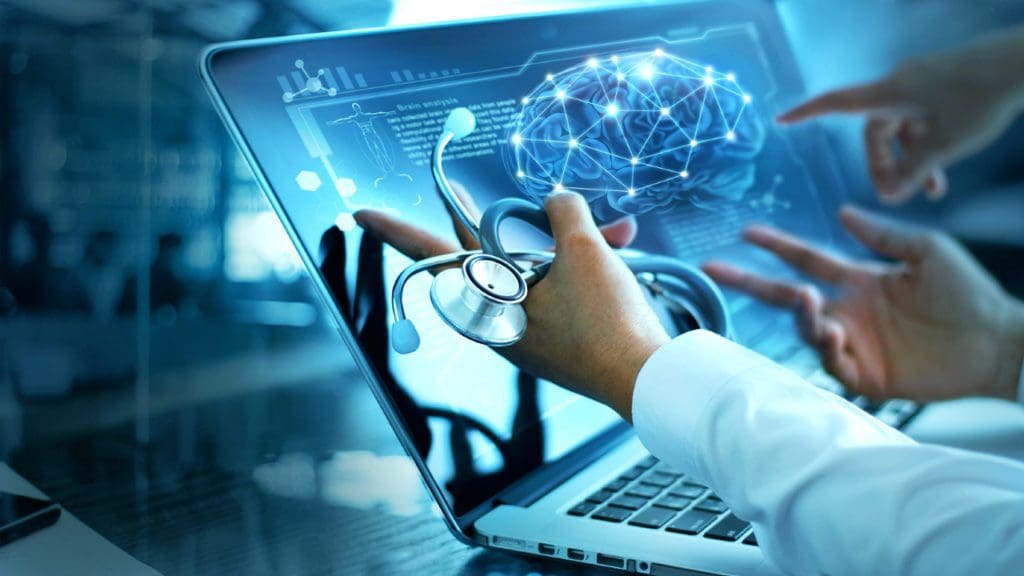In the rapidly evolving landscape of global healthcare and life sciences, technology plays an increasingly pivotal role in driving advancements. The rise of artificial intelligence, with its many applications, alongside the expansion of virtual care through the ongoing surge of telemedicine, sets the stage for substantial growth in the healthcare sector in 2024.
As these technologies gain momentum, the industry is poised for transformative shifts, steering the healthcare landscape into new dimensions over the coming year. IEEE SA shares five trends predicting their collective impact on healthcare delivery, diagnosis, and patient-care experiences.
Generative AI and Health Wearables – Prioritizing Patients
In 2024, the surge of Generative AI is set to revolutionize numerous industries, and the healthcare sector stands to experience significant impacts from this groundbreaking technology. Specifically, the convergence of Generative AI with health wearables/IoT could redefine the landscape of patient care.
The potential unlocked by Generative AI in handling data generated by clinical-grade wearables is immense. With its ability to analyze vast amounts of information, wearables will move past their traditional role as mere health monitors—they will evolve into proactive healthcare tools, capable of not only tracking but also diagnosing health conditions. Harnessing the power of Generative AI, wearables will identify subtle anomalies and provide comprehensive diagnoses, detecting nuances that might bypass immediate human detection.
Additionally, Generative AI’s capacity to generate synthetic data holds promise in the healthcare space. The scarcity of accessible real-world data, often confined within silos across healthcare systems and insurance companies, presents a challenge for healthcare advancement. Synthetic data serves as a valuable resource for training models, yet it’s important to note that while it mimics real-world scenarios, it doesn’t replicate the complexities of genuine data.
As we anticipate the growing integration of Generative AI and health wearables, it’s evident that this convergence will usher in a new era of healthcare innovation. While synthetic data fills a void in the absence of readily accessible real-world data, the transformative potential of Generative AI within wearables promises a leap toward more proactive and precise healthcare solutions.
AI and Genomics - Enabling Personalized Medicine
Not only is AI being used in its generative form for IoT and wearable applications, but it is also being used within the genomics field to enable personalized medicine. Personalized medicine is a novel approach to healthcare that aims to provide tailored treatment to patients with chronic conditions or predisposition to diseases, rather than a one-size-fits-all approach. The application of whole exome sequencing (WES) and targeted sequencing has been instrumental in reaping the benefits of personalized medicine. WES targets approximately 3% of the whole genome, which is the basis for protein-coding genes. Nonetheless, it has the characteristics of big data in large deployment. The application of WES and its relevance in advancing personalized medicine has been aided by AI applications.
In personalized medicine, AI has been deployed to cut costs, especially in overcoming the enormous volume of patient data that is collected. AI-based models combined with genomics data can aid in the identification of cancer subtypes, the discovery of new markers and therapeutic targets, and can provide a better understanding of cancer-driving genes, all of which help to provide patients with personalized treatment. In the future, it is likely that AI use will include helping doctors to analyze complicated genetic data more rapidly, allowing them to provide precision medicine to patients who need it. Together, AI imaging and genetic analysis may help doctors rapidly pinpoint a diagnosis and create a highly personalized treatment plan, thus improving a patient’s care.
Going into 2024, we expect to see AI applications being used more frequently in genomics, as demand for personalized medicine continues to grow and be explored throughout the industry. The incorporation of AI in the clinical utility landscape of genomic information has revolutionized the field and has created a new frontier toward advancing the field of personalized medicine in the near future.
Data Protection and Cybersecurity for Healthcare Organizations
Hospitals have access to the personal information of thousands of patients, including financial information, insurance, social security and medical records, making them a big target for hackers; security officials and administrators are increasingly concerned about data protection and cybersecurity within hospitals.
A ransomware attack can have serious consequences on hospital operations and on the well-being of its patients. The hospital’s first priority is to provide quality care, and a ransomware attack can cause delayed surgeries, rescheduled appointments, and delays in patient care. These consequences can cause patients to lose trust in the hospital and its ability to provide quality service.
While attacks may not disappear entirely, administrators deploy strategies and tools to minimize the impact and consequences. One application of AI that is not as well-known is its supporting role in preventing data breaches. By analyzing patterns and anomalies in network data, AI algorithms can detect and identify potential threats before they emerge. Hospitals can be vulnerable targets due to the lack of integration among systems. It is important, therefore, for healthcare systems to build a comprehensive and unified system of threat detection to enhance patient service and improve efficiency.
The concept of “hospital at home” brings a new set of challenges as data leaves the hospital environment. One of the biggest challenges is making sure the data is secure while being transmitted between the hospital and home. Hospitals must ensure that devices used at home are up to date with the latest security protection and are not accessible to other parties.
Hospitals are under immense pressure to keep up with the latest technology in research, data equipment, and patient care. In the past, information technology was not as much a priority; however, as cybersecurity risks continue and technology evolves, it occupies a more prominent role in institutional priorities. Investing in cybersecurity measures and deploying AI can help hospitals navigate better when under attack and mitigate the risks of such attacks.
The Rise of Telemedicine 2.0
The onset of the COVID-19 pandemic resulted in a significant increase in the utilization of digital health services, including telemedicine. Nearly four years later, telemedicine has maintained tremendous growth, with services projected to increase from $94 billion to approximately $286 billion by 2030.
People worldwide are living longer and the need for care is growing. By 2030, one in six people in the world will be 60 years or older. By 2050, the world’s population of people aged 60 years and older will double. The number of persons aged 80 years or older is expected to triple between 2020 and 2050 to reach 426 million. With an aging population that requires attentive care amid a shortage of caregivers, the idea of telemedicine 2.0 has become more prevalent. Telemedicine can help provide necessary care from remote locations.
Virtual hospitals are one such example, in which a central location serves as a hub for monitoring patients in the comfort of their homes. Patients transmit their data from home, and virtual assistants facilitated by AI provide support to patients based on their needs.
Virtual assistants can assist healthcare workers by providing guidance on treatments, diagnoses, and medications. They can also assist patients by answering questions about their care and providing them with the information they need to make informed decisions. Virtual assistants have limitations as it relates to complex medical issues and inquiries, and therefore the clinical staff is brought in to assist.
IEEE SA is addressing these advances in telemedicine and how it will revolutionize the healthcare ecosystem through its Industry Connections programs. The future of mobilized healthcare will rely heavily on a robust, seamless, private, secure, and connected bioinformatics highway, enabling real-time patient care beyond the hospital. The way we see telehealth today will look very different tomorrow. Telehealth is in its infancy and challenges are significant, but the potential for the future is significant.
Artificial Intelligence and Machine Learning Applications for Agriculture
More than 800 million people—or ten percent of the world’s population—suffer from hunger, according to the United Nations Food and Agriculture Organization (FAO). The United Nations World Food Programme estimates that 60 percent of chronically hungry people are women and girls and 80 percent of all people living with hunger live in areas prone to climate change. The world’s population is expected to grow to nearly 10 billion by 2050 and according to the FAO, 70 percent more food will be needed in 2050 than was produced in 2009. Complicating matters, experts project only a tiny fraction of additional land will be in cultivation in 2050. Worse, researchers say the number of farms globally is shrinking while populations continue to rise.
Like diagnosing a disease, we must first look at the symptoms. Population growth and urbanization; climate change affecting growth areas and harvests; farmland degradation due to shrinkage of natural resources and other factors; and massive food waste all contribute to food insecurity.
An increasing focus is the farming and ranching of what must become our future. For growth crops, some experts use terms such as Agriculture 4.0 or data-driven farming. At the core of these approaches are new opportunities presented by artificial intelligence and machine learning.
Some use cases include using AI and machine learning (ML) to help determine the precise times to sow, fertilize, and harvest for maximum yields. Combined with sensors, AI systems can provide insights into soil health and prescribe remedies as well as anticipate weather conditions and responses.
AI and ML can also be used for intelligent application of fertilizers and pesticides, using data to determine the optimal time to sow seeds and select the best crops to grow. These systems can also help detect poor nutrition in plants and pest infestations, triggering deployment of the appropriate chemicals at the right times to maximize yields and minimize losses. To address a shortage of farm labor, AI-based robots can be used to harvest, leveraging a number of sensors to determine if a crop is suitable for harvest or should be left behind because it’s damaged or unripe.
Finally, these same technologies can be applied to raising livestock, helping ranchers anticipate and react to an array of conditions including herd, feed, and soil management.
Beyond the farm and the ranch, AI and ML technologies can greatly improve supply chain management, helping to distribute food to where it’s needed with less spoilage.
These technologies will help manage natural resources, such as water, and to predict future conditions and their implications, such as changes that occur due to increasing temperatures and seasonality shifts as the result of climate change. As examples, warmer temperatures can bring new pest issues, impact water resources, and modify optimal sowing and harvest times.
Numerous challenges lie ahead in order to address the impending need to optimize all aspects of food production to feed the world’s growing population. One of many challenges is to empower the small farmers, significant contributors to overall output, by democratizing data and breaking it down for all to understand and apply.
IEEE SA is looking at ways to address these needs in different ways, including its Enabling a Smart and Equitable Agriculture Ecosystem Program, which is leveraging technologies such as blockchain-based supply chain management solutions, Al-based digital agronomy, autonomous and semi-autonomous machines, and loT/remote sensing solutions. The goal of this group is to understand the current state of open digital agronomy and data interoperability and recommend best practices and develop frameworks for increasing collaboration around agricultural data collection, sharing, security, and management. Within these collaborations, multidisciplinary volunteers will propose standards and certification processes for data providers and consumers to accelerate innovation.
Get Engaged with IEEE SA
In 2023, we saw many changes and developments in healthcare and life sciences that shaped technological, economic, and social innovation. Moving into 2024 and beyond, IEEE SA will continue to help the global healthcare and life sciences ecosystems address existing and new opportunities to drive a more accessible, secure, and trusted offering.
Learn More About IEEE SA’s Work in Healthcare and Life Sciences








